Solar panel mounting refers to the way panels are securely fixed in place, whether on a pitched roof, flat roof, or mounted on the ground. The type of system you choose can influence not only the look of your installation but also how effectively your panels generate energy.
At Sunlit Solar, we install a wide range of mounting systems to suit different properties and needs. Every installation is unique, and the right mounting solution depends on your roof type, available space and energy goals.
On this page, we’ll guide you through the different options available, helping you understand which solar panel mounting system could be the best fit for your project.
Mounting Options
Pitched Roofs
On-Roof Solar Mounting
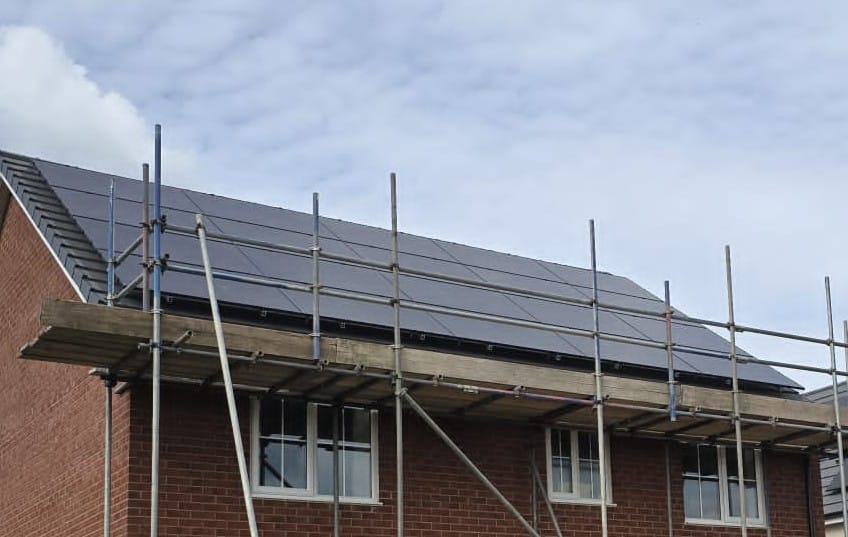
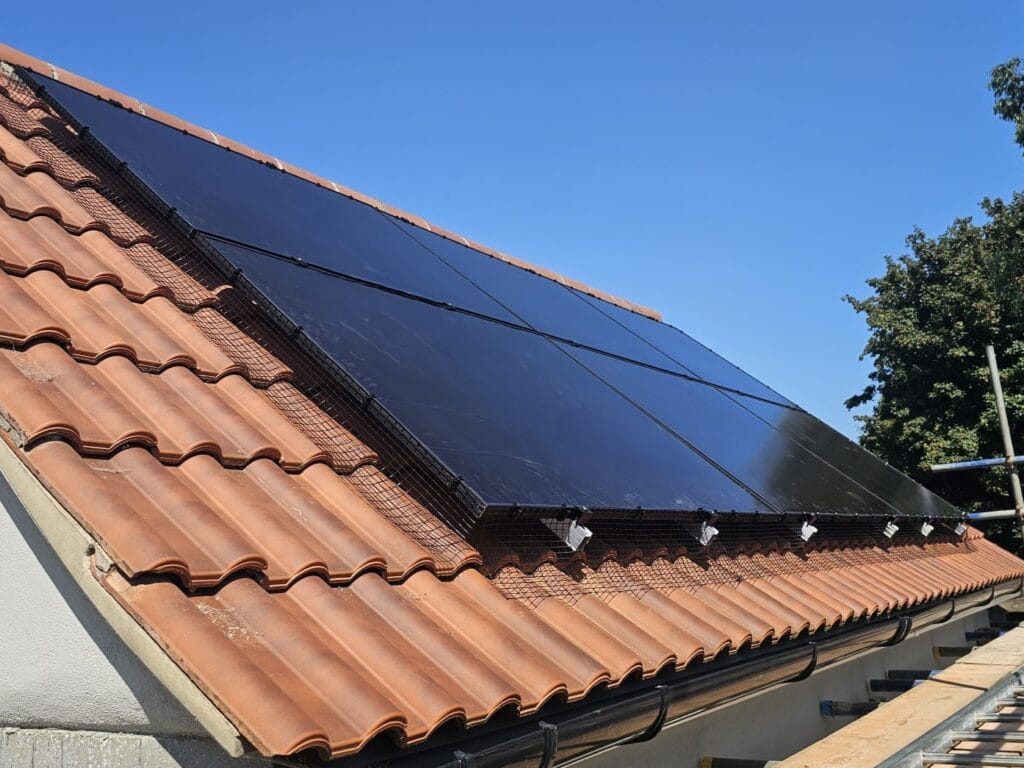
Learn more about on-roof systems
On-roof mounting systems are the most widely used method for installing solar panels on residential properties. As the name suggests, panels are secured above the existing roof covering, making this option both straightforward and cost-effective. This approach allows for excellent airflow beneath the panels, helping to regulate temperature and maintain efficiency.
The installation process typically involves fixing durable metal hooks into the roof rafters, sometimes requiring the temporary removal and replacement of a few tiles. Rails are then attached to the hooks, providing a secure base onto which the solar panels are clamped. To ensure long-lasting protection, weatherproof seals are applied around the fixing points.
Different roof types may require additional steps. For example, on slate roofs, flashing is often installed to create a secure, watertight finish before the panels are mounted. This adaptability makes on-roof systems a practical and reliable choice for a wide range of homes.
One consideration with on-roof systems is that the gap beneath the panels can sometimes attract birds looking for a nesting spot. While this doesn’t damage the panels, it can become a nuisance and may create unwanted noise. To prevent this, Sunlit Solar now installs bird mesh protection as standard with all on-roof systems, ensuring your installation remains clean, quiet, and hassle-free.
In-Roof Solar Mounting
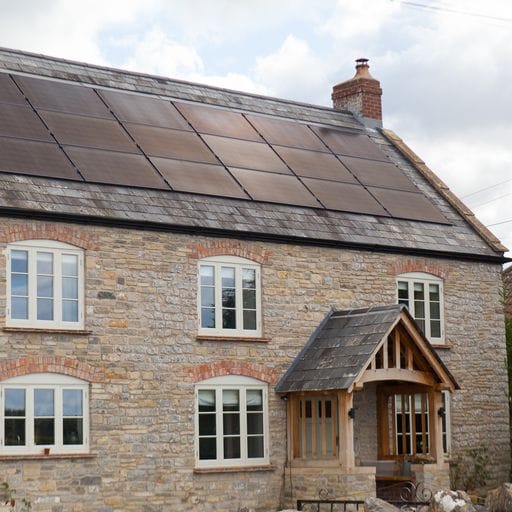
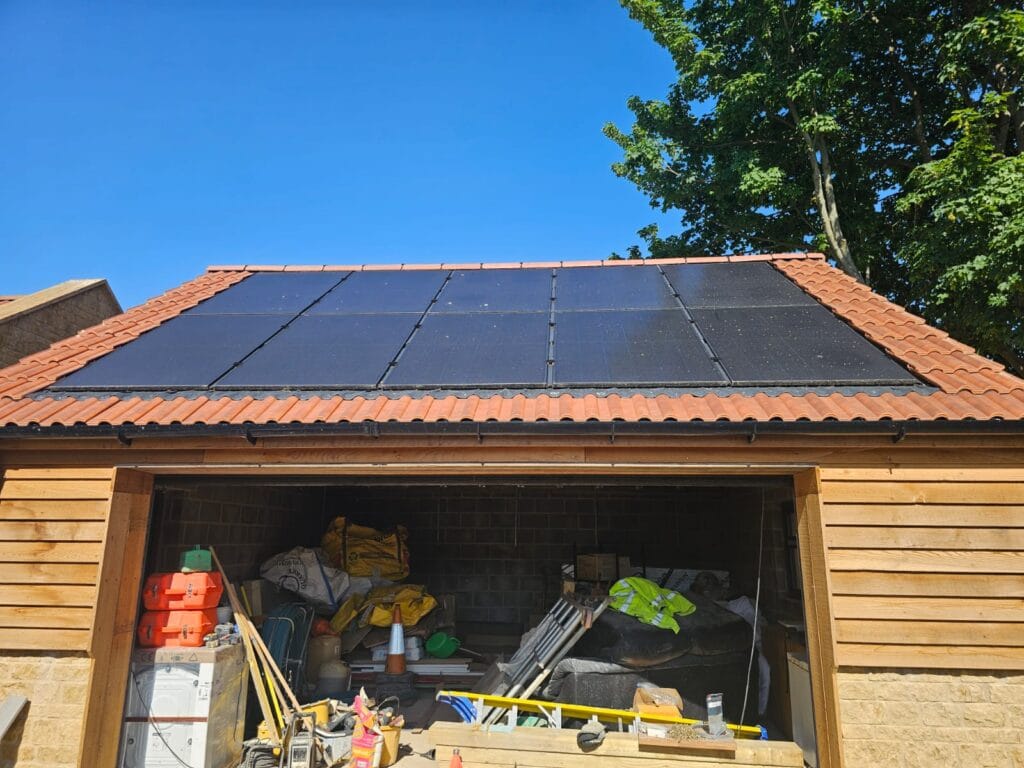
Learn more about in-roof systems
In-roof, or integrated, solar mounting systems are an excellent choice for new builds or homes undergoing re-roofing. Unlike on-roof systems where panels sit above the existing tiles, in-roof systems replace a section of the roof covering entirely. The solar panels are fitted into specially designed trays that sit flush with the surrounding tiles, creating a clean, streamlined appearance that many customers prefer for aesthetic reasons.
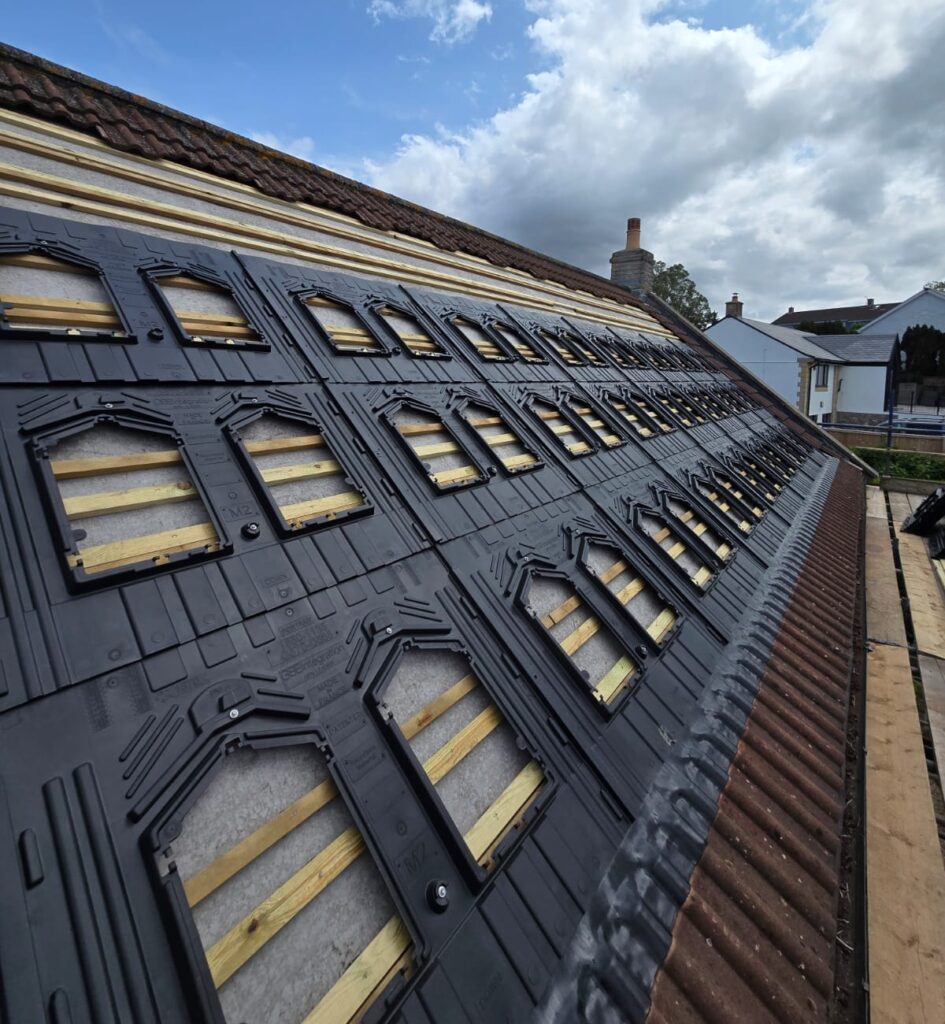
Because the panels are integrated into the roof itself, there is no gap beneath them, which means birds cannot nest underneath. This makes in-roof systems a neat and low-maintenance option. However, the reduced airflow around the panels does mean they typically operate at around 5–10% lower efficiency compared to on-roof systems, as there is less ventilation to help regulate temperature.
Overall, in-roof solar mounting offers a sleek, modern finish that blends seamlessly into your property, making it particularly popular for homeowners who want their solar panels to be as discreet as possible.
Pitched Metal Trapezoidal Roof Mounting
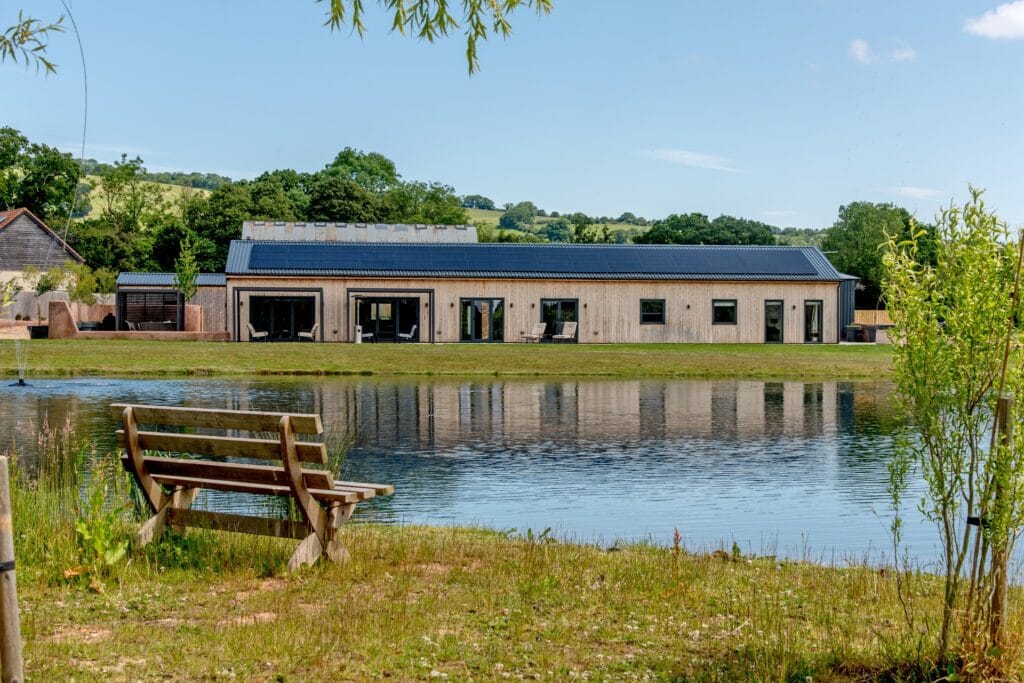
Learn more about pitched trapezoidal systems
For buildings with pitched trapezoidal metal roofs, solar panels can be securely fixed using specialist mounting brackets designed to attach directly to the raised seams or ridges of the roof sheets. This system avoids the need for heavy ballast or complex substructures, making it both lightweight and cost-efficient.
The panels follow the natural angle of the pitched roof, which often provides excellent orientation for capturing solar energy. Because the mounting system sits close to the roof surface, installation is straightforward, quick, and highly durable. The design also minimises wind uplift, making it suitable for exposed or industrial sites.
One of the main advantages of pitched trapezoidal systems is that they make full use of large roof areas without compromising the roof’s weatherproofing or integrity. They’re particularly effective on warehouses, factories and agricultural buildings, where the pitched angle naturally enhances solar performance.
Flat Roofs
South-Facing Flat Roof Mounting
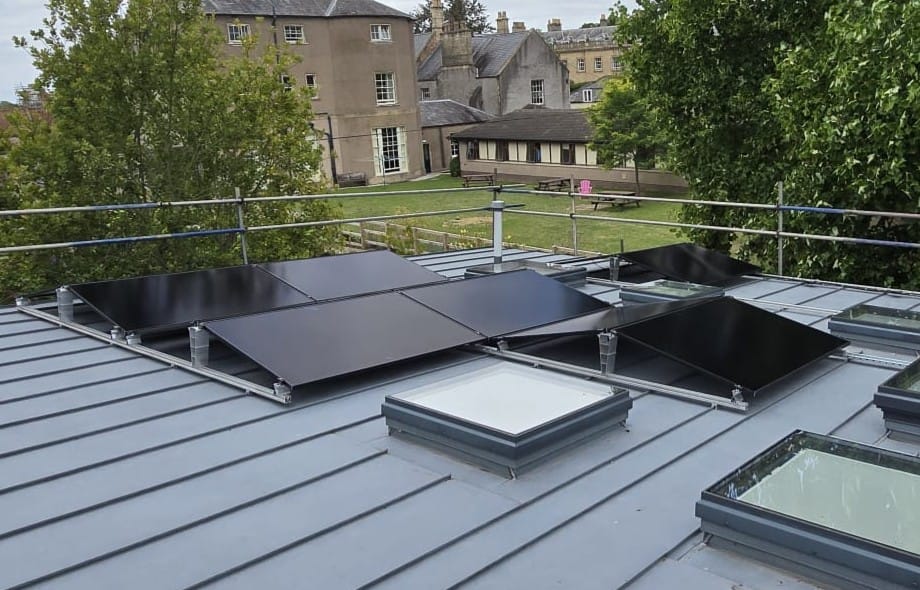
Learn more about south-facing flat roof systems
For properties with south-facing flat roofs, a dedicated flat roof mounting system provides an excellent solution. A south-facing system uses tilted frames to angle the panels towards the sun. This tilt is essential as it allows the panels to capture maximum sunlight throughout the day, ensuring higher efficiency and better overall performance.
In addition to optimising energy generation, the tilt design offers a practical benefit: it helps rainwater run off the panels and reduces the risk of dirt or debris building up on the surface. This natural cleaning effect means the panels remain more efficient over time, with less need for maintenance.
South-facing flat roof systems are particularly well suited to commercial buildings or larger homes with wide, unobstructed roof areas. They create a clean and professional-looking installation while making excellent use of available space. By maximising solar exposure and minimising maintenance issues, this mounting option provides a highly effective way to generate long-term renewable energy.
East/West Flat Roof Mounting
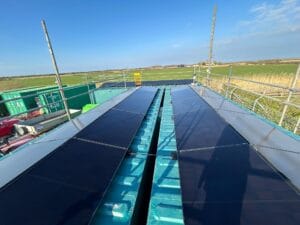
Learn more about east/west systems
For properties with flat roofs, an east–west solar mounting system can be an ideal solution. Instead of tilting all panels to face a single direction, the panels are mounted back-to-back at a low angle, with one row facing east and the other facing west. This layout maximises the usable roof space while keeping the system stable and aerodynamic, reducing the need for heavy ballast.
The east–west configuration provides a smoother and more consistent energy output throughout the day, as the panels capture the morning sun from the east and the afternoon sun from the west. While south-facing flat roof systems may produce higher peak output at midday, the east–west setup balances production across the whole day, which can be more beneficial for properties that use energy steadily rather than in sharp peaks.
Another advantage of this system is the efficient use of space: because the panels are placed at a lower tilt and closer together, more panels can be installed on the same roof area compared to a south-facing arrangement. This makes east–west flat roof mounting especially popular for commercial buildings or large residential projects looking to maximise capacity. For more information about East-West solar installations, read our blog post ‘Optimising Solar Energy Efficiency with East-West Solar Panel Arrays’
Flat Trapezoidal Roofs
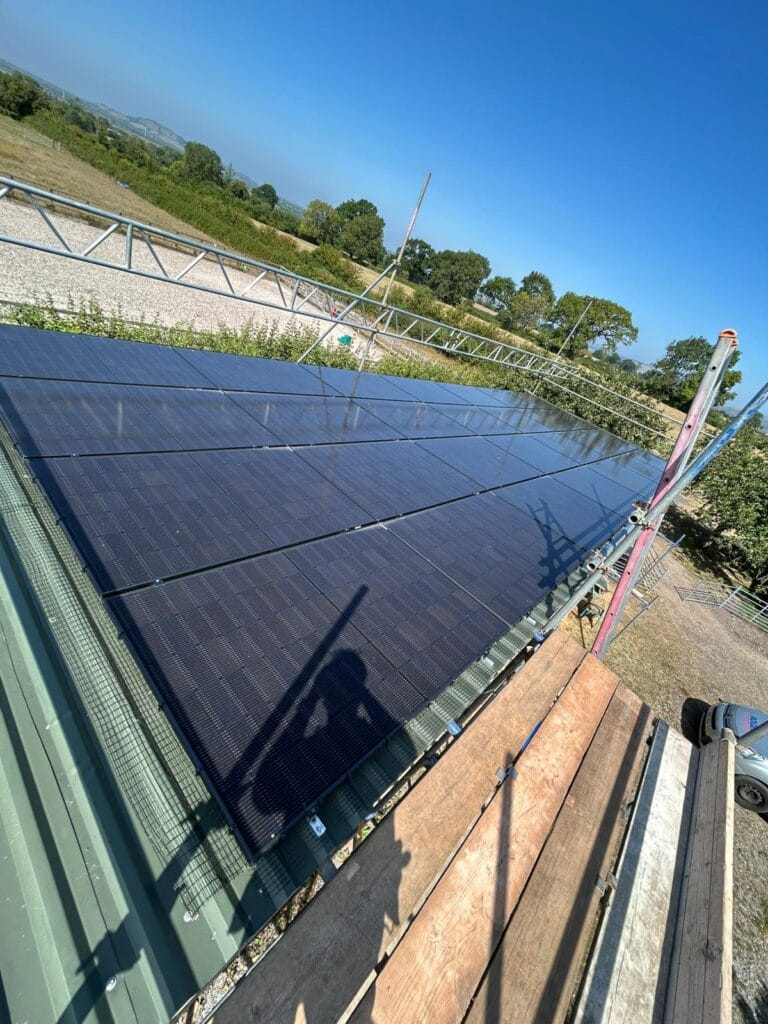
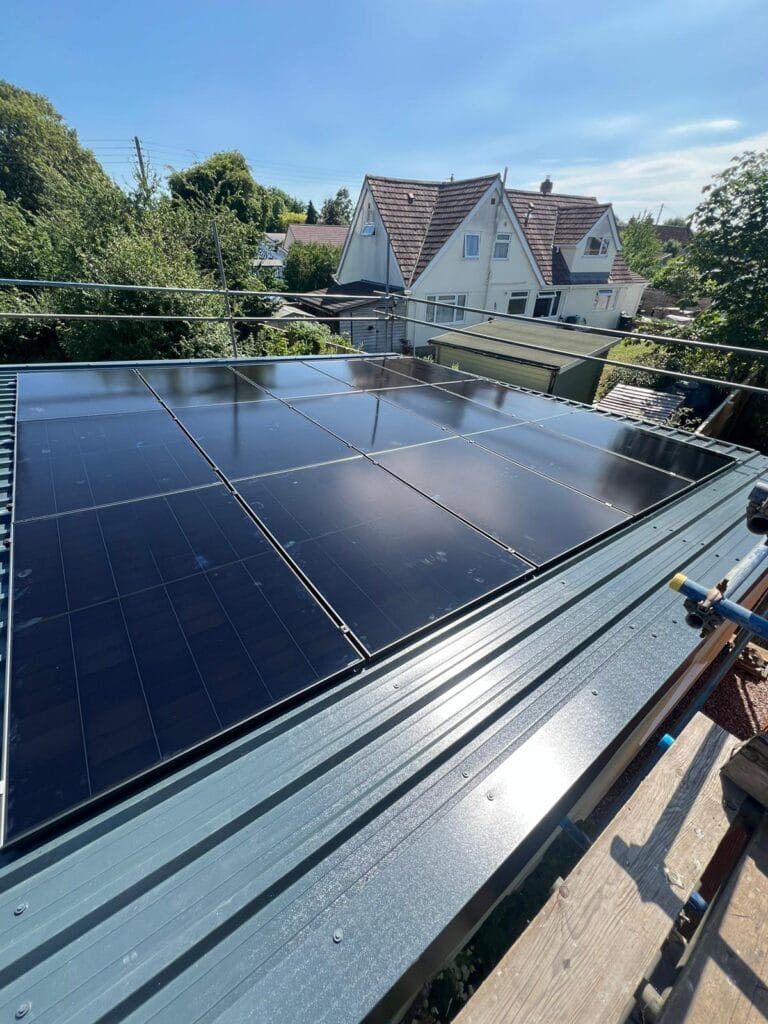
Learn more about flat trapezoidal roof systems
Trapezoidal roof systems are a popular choice for industrial and commercial buildings, where lightweight metal sheet roofing is commonly used. With this type of system, the solar panels are mounted directly onto the raised ridges of the trapezoidal metal sheets using special brackets and fixings designed for strength and durability. This ensures a secure fit without the need for heavy ballast or penetrating deeply into the structure of the roof.
Because the panels sit close to the surface, trapezoidal roof systems are quick to install, highly cost-effective, and lightweight, making them ideal for large-scale projects. The streamlined design also reduces wind uplift, ensuring long-term stability even in exposed locations.
While these systems are not raised as high as traditional on-roof or flat-roof mounts, they are carefully angled to optimise energy generation. Trapezoidal mounting is particularly effective for sites with large roof areas facing south, east, or west, where maximum panel coverage and speed of installation are key priorities.
Ground Mounted Systems
Solar Panels Mounted on Metal Frames
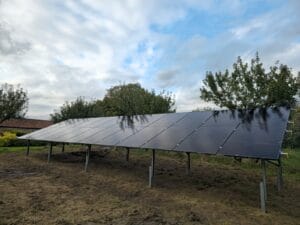
Learn more about ground mounted systems
Ground-mounted solar panels are installed directly onto the ground rather than on a roof, making them a flexible option for properties with available land or where roof space is limited. Panels are typically fixed to sturdy metal frames, which are designed to provide stability, withstand the elements and allow for easy maintenance.
This type of system can be installed at the optimal angle and orientation for maximum solar exposure, often improving energy generation compared with panels constrained by a roof’s pitch or direction. Ground-mounted systems are also easier to expand, making them ideal for homeowners or businesses looking to increase capacity in the future.
While they do require additional space and a secure foundation, ground-mounted systems offer excellent long-term performance and accessibility. They are particularly suited to larger properties, gardens or commercial sites where land is available and solar potential can be maximised.
Car Port or Canopy Mounts
Solar Panels Mounted on a Pergola
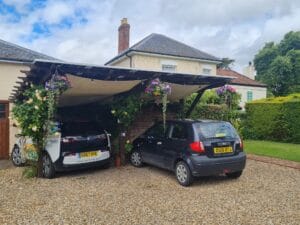
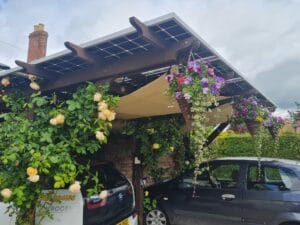
Learn more about car port or canopy mounted systems
Carport and canopy solar mounting systems provide a dual benefit: generating clean energy while offering covered parking or shaded outdoor areas. These systems can be customised to suit a variety of spaces, including driveways, car parks and commercial areas, with the angle and orientation optimised for maximum solar exposure. By elevating the panels above the ground, they remain accessible for maintenance and allow the space beneath to be used fully.
A key advantage of carport and canopy systems is that they can be combined with an EV charger, allowing you to charge your electric vehicle directly from the solar energy generated while it’s parked. This makes it a practical, efficient and sustainable solution for homes or businesses looking to maximise the use of their renewable energy.
Carport and canopy installations are ideal for both residential and commercial projects where roof space is limited but land or parking areas are available. In addition to providing clean energy, they add functional value to the property, making them an efficient and practical solar solution.
Vertically-Mounted Systems
Solar Panels Mounted Vertically
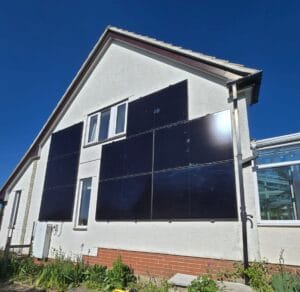
Learn more about vertically mounted systems
Vertical-mounted solar panels are installed on walls or façades rather than horizontal or pitched surfaces. This type of system is ideal for properties with limited roof space or for integrating solar panels into the building’s design, such as on south-facing walls or as part of architectural features.
By mounting panels vertically, you can make use of otherwise unused surfaces while still generating solar energy efficiently. Vertical installations are particularly effective in the winter months when the sun is lower in the sky, capturing light that might be missed by flatter panels.
These systems are highly versatile and can be customised to suit a range of buildings, from homes to commercial sites. Like other solar mounting options, vertical panels can also be paired with battery storage or EV chargers, maximising the usability of the clean energy produced.
Vertical-mounted solar is a practical solution for those looking to optimise energy generation without altering roof space. It can also be an excellent option for homeowners who already have solar on their roof but want to take full advantage of the free power the sun provides by adding panels to a vertical wall.
Ready To Go Solar?
Discover how our premium solar solutions can transform your energy usage and save you money.
MAke An Enquiry OnlineMake an Enquiry today to schedule your FREE site survey and take the first step toward a greener future!
